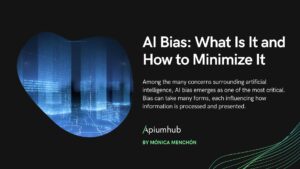Table of Contents
Today, businesses can collect data along every point of the customer journey. This information might include mobile app usage, digital clicks, interactions on social media and more, all contributing to a data fingerprint that is completely unique to its owner. More data is available to businesses than ever, which is why business analytics is a growing field. But how and why professionals use data to reach decisions varies depending on the industry. Airlines may rely on business analytics to determine ticket prices, for example, while hospitals use data to optimize the flow of patients or schedule surgeries. In this article we will discuss business analytics tools and use cases.
“The world of data is pretty extreme, and to not leverage it effectively puts a company in a competitive hole. Business analytics is simply about using data to generate insights.”
– says Douglas Laney, innovation fellow for data and analytics strategy at the business and technology consulting firm West Monroe
What is Business Analytics?
First of all what is Business Analytics exactly? Business Analytics is the process by which businesses use statistical methods and technologies for analyzing historical data in order to gain new insight and improve strategic decision-making.
Business analytics combines the fields of management, business and data science.
Also, Business analytics refers to the use of methodologies such as data mining, predictive analytics, and statistical analysis in order to analyze and transform data into useful information, identify and anticipate trends and outcomes, and ultimately make smarter, data-driven business decisions.
There are three primary methods of business analysis:
- Descriptive: The interpretation of historical data to identify trends and patterns
- Predictive: The use of statistics to forecast future outcomes
- Prescriptive: The application of testing and other techniques to determine which outcome will yield the best result in a given scenario
The main components of a typical business analytics dashboard include:
- Data Aggregation: prior to analysis, data must first be gathered, organized, and filtered
- Data Mining: data mining for business analytics sorts through large datasets using databases, statistics, and machine learning to identify trends and establish relationships
- Association and Sequence Identification: the identification of predictable actions that are performed in association with other actions
- Text Mining: explores and organizes large, unstructured text datasets for the purpose of qualitative and quantitative analysis
- Forecasting: analyzes historical data from a specific period in order to make informed estimates that are predictive in determining future behaviors
- Predictive Analytics: predictive business analytics uses a variety of statistical techniques to create predictive models, which extract information from datasets, identify patterns, and provide a predictive score for organizational outcomes
- Optimization: once trends have been identified and predictions have been made, businesses can engage simulation techniques to test out best-case scenarios
- Data Visualization: provides visual representations such as charts and graphs for easy and quick data analysis
According to a recent study by MicroStrategy, companies worldwide are using data to:
- Boost process and cost efficiency
- Drive strategy and change
- Monitor and improve financial performance
The research also shows that, over the next years global enterprises predict their investments in analytics will accelerate.
“Using data analytics is a very effective way to have influence in an organization. If you’re able to go into a meeting, and other people have opinions, but you have data to support your arguments and your recommendations, you’re going to be influential” – said Harvard Business School Professor Jan Hammond
Business Analytics use cases
Some business analytics examples include the operation and management of clinical information systems in the healthcare industry, the tracking of player spending and development of retention efforts in casinos, and the streamlining of fast food restaurants by monitoring peak customer hours and identifying when certain food items should be prepared based on assembly time.
For example, fast-food restaurants have begun to implement business analytics to streamline their restaurants. By monitoring how busy the drive-thru is these businesses can increase efficiency during peak hours. When the line gets long, the digital order boards change. They begin to highlight items that can be prepared quickly. This leads to more simple orders that can be completed quickly. When the lines are short, slower items with higher margins are featured. In this way, the restaurants can respond to real-time needs to improve efficiency.
Also, business analytics can aenable new types of marketing campaigns. The data collected by businesses give insights into customer behavior which helps businesses understand the effectiveness of advertising campaigns with different audiences. Targeting audiences that are more likely to respond to specific campaigns or products increases efficiency overall. In addition, understanding consumer habits can help businesses improve customer retention. By identifying customers who are less likely to return, businesses can offer targeted promotions. This provides a cost-effective way to gain customer loyalty.
Another very good example is delivering relevant products. Products are one of the largest investments companies make. The product management team’s role is to recognise trends with the help of BAnalytics that drive strategic roadmap for innovation, new features, and services.
Business analytics has many use cases, but when it comes to commercial organizations, BA is typically used to:
- Analyze data from a variety of sources. This could be anything from cloud applications to marketing automation tools and CRM software.
- Use advanced analytics and statistics to find patterns within datasets. These patterns can help you predict trends in the future and access new insights about the consumer and their behavior.
- Monitor KPIs and trends as they change in real-time.
- Many companies use descriptive analytics for a deeper look into the behavior of customers and how they can target marketing strategies to those customers.
- Diagnostic analytics: Focuses on past performance to determine which elements influence specific trends.
Through data mining, for example, a business may be able to see which customers are buying specific products at certain times of the year. This data can then be used to segment those customers.
Through text mining, companies collect textual information from social media sites, blog comments, and even call center scripts. Then, this data is used to improve customer service and experience, develop new products, and review the performance of their competitors.
Through data aggregation marketing teams use data like customer demographics and metrics (age, location, number of transactions, etc.) to personalize their messaging and offers.
Forecasting can be used for several different things, such as retail sales around specific holidays and spikes in specific internet searches around certain events – like an award show or the Super Bowl.
Through prescriptive analytics business analytics can show you the best course of action for a given situation. While descriptive analytics shows what has already happened, and predictive analytics tries to forecast what might happen next, prescriptive uses that information to give you potential solutions based on similar situations (Year over Year data, seasonality data, product launch data). For example, ticket sales for a holiday show are lagging over last year’s sales. Prescriptive analytics may suggest a need to lower prices or add a matinee performance in response.
“Forecasting based on historical data is useful for setting yearly goals and predicting online user behavior, such as traffic and conversions. Customer journey analytics allow you to identify first-touch interactions with a potential lead, all the way to the conversion step. Having visibility to all touch-points in the nurture process lets you optimize the steps in between and improve the user journey.” – Jackie Jeffers, Analytics Strategist at Portent
Business Analytics benefits
- Improves performance by giving your business a clear picture of what is and isn’t working
- Provides faster and more accurate decisions
- Minimizes risks as it helps a business make the right choices regarding consumer behavior, trends, and performance
- Inspires change and innovation by answering questions about the consumer
- Present meaningful, clear data to support decision making
- BA can model the trends in an organization’s sales, profits, and other key metrics while projecting them for the future
Business Analytics Tools
Business analytics tools are helpful for companies to stay competitive and maximize revenue streams and efficiency.
1.QlikView
QlikView is one of the most preferred software for business analytics because of its unique features, such as patented technology and in-memory processing, facilitating the delivery of ultra-fast business analytics reports.Included among the best business analyst software tools, QlikView allows users to visualize data relationships using specific colors for related and non-related data with automatically maintained data association.
2. Board
Board permits users to create interactive and intuitive business analytics reports and dashboards. The highly-scalable business analytics platform integrates the best-in-class analytical tools for business, including a powerful statistics suite.It can manage massive data volumes, and it can also support accurate scenario analysis and forecasting by manipulating the data supplied to scenarios.
3. Microstrategy
The Microstrategy business analytics platform integrates superior analytics capabilities that allow hassle-free processing of unstructured text data, which specialists can further analyze via the platform’s text analytics solutions. One of the most up-to-date business analytics tools, Microstrategy, incorporates insightful analytical and statistical capabilities that enable real-time trend forecasting, with options for third-party data mining.
4. TIBCO Spotfire
TIBCO Spotfire, recognized as one of the most advanced software for business analytics, offers powerful and automated analytics solutions that allow data professionals to run business analytics reports and analysis over a defined time span.
5. Tableau
Experts agree that Tableau Big Data Analytics is one of the best business analyst applications, given its dynamic and cutting-edge capabilities for unstructured text analysis. Tableau’s business analytics platform, which includes robust and reliable statistical tools, empowers users to perform an in-depth analysis and predict patterns based on current and historical data.
6. Thoughtspot
Thoughtspot is a Data analytics software that allows users to explore Data from various sources through reports and natural language searches. It automatically seeks insights to help users discover trends they didn’t know to search. It also enables users to automatically link tables from various Data sources to break down Data silos.
7. RapidMiner
RapidMiner is a Data analytics software that caters to all the technology users need, from integration, cleaning to Data transformation before they run predictive analytics and build statistical models. Nearly all this is done by the users through a simple graphical interface.
If you are working on a business analytics project or need any help related to this field, feel free to contact us, we are experts in data science! We are here to help!
Author
-
Ekaterina Novoseltseva is an experienced CMO and Board Director. Professor in prestigious Business Schools in Barcelona. Teaching about digital business design. Right now Ekaterina is a CMO at Apiumhub - software development hub based in Barcelona and organiser of Global Software Architecture Summit. Ekaterina is proud of having done software projects for companies like Tous, Inditex, Mango, Etnia, Adidas and many others. Ekaterina was taking active part in the Apiumhub office opening in Paseo de Gracia and in helping companies like Bitpanda open their tech hubs in Barcelona.
View all posts










